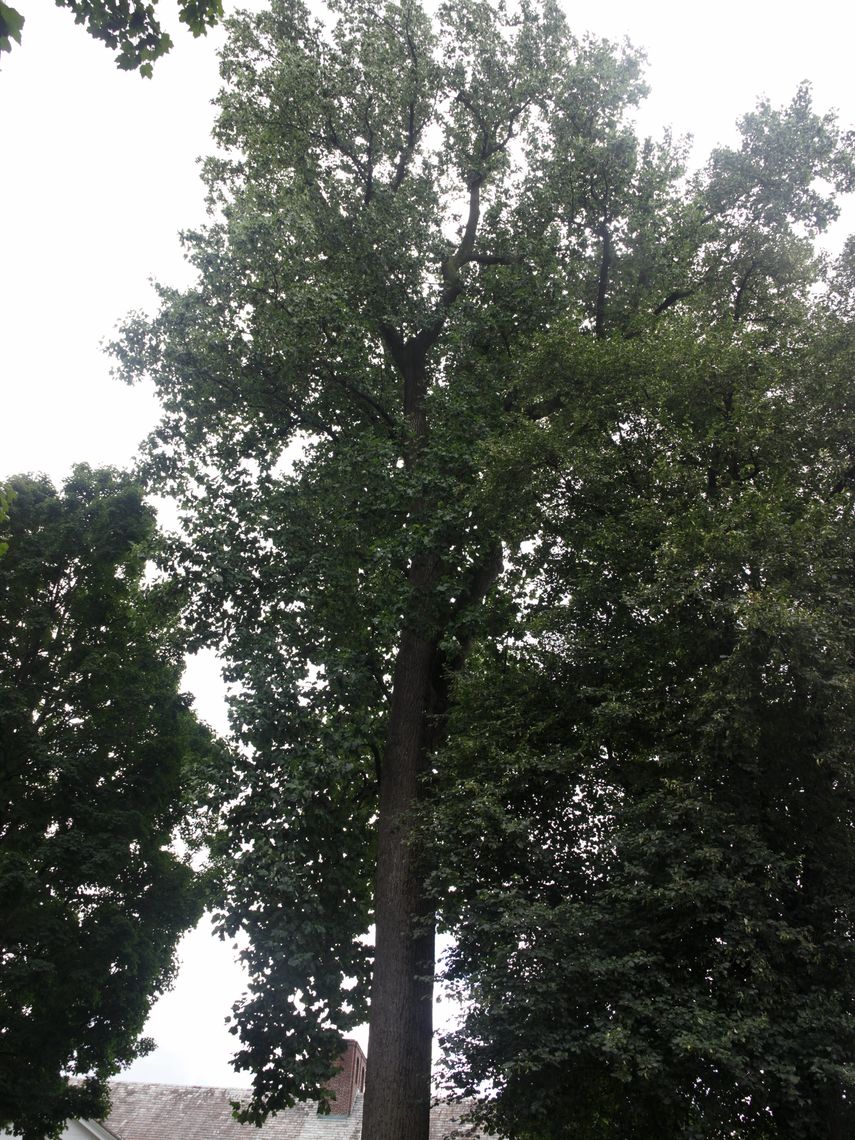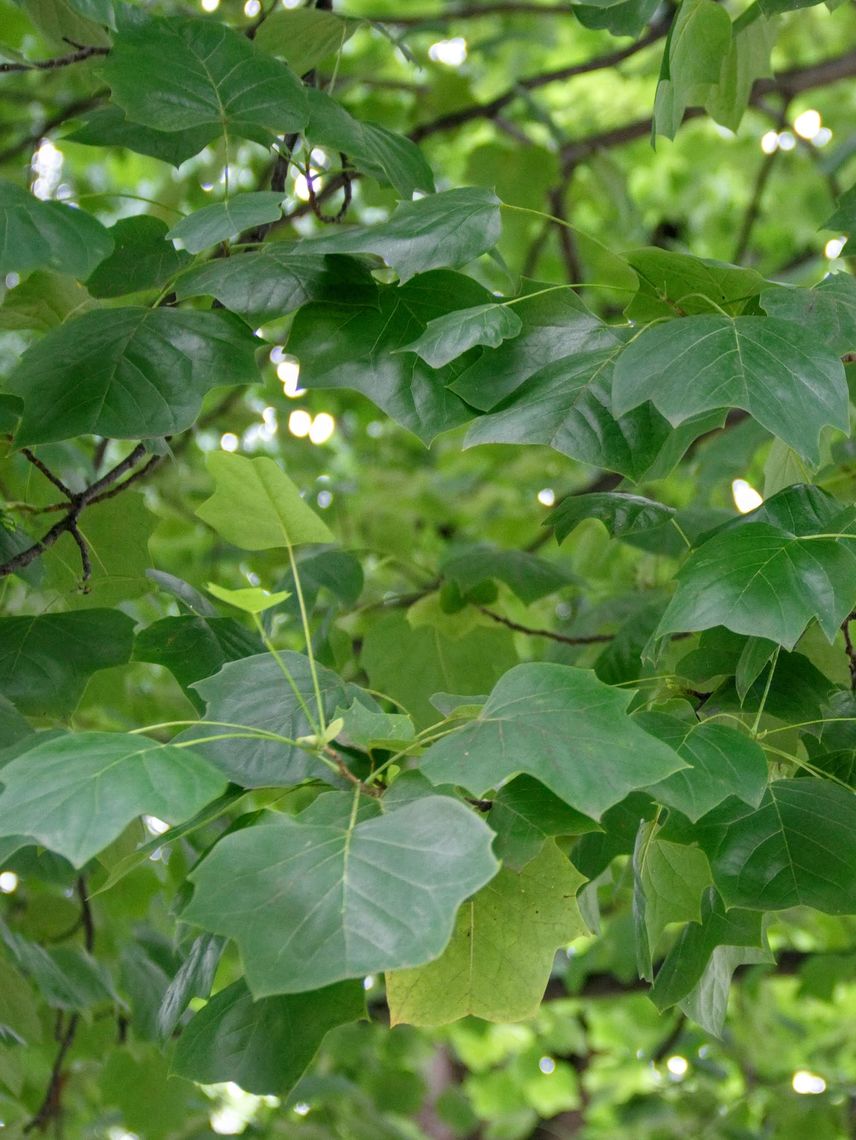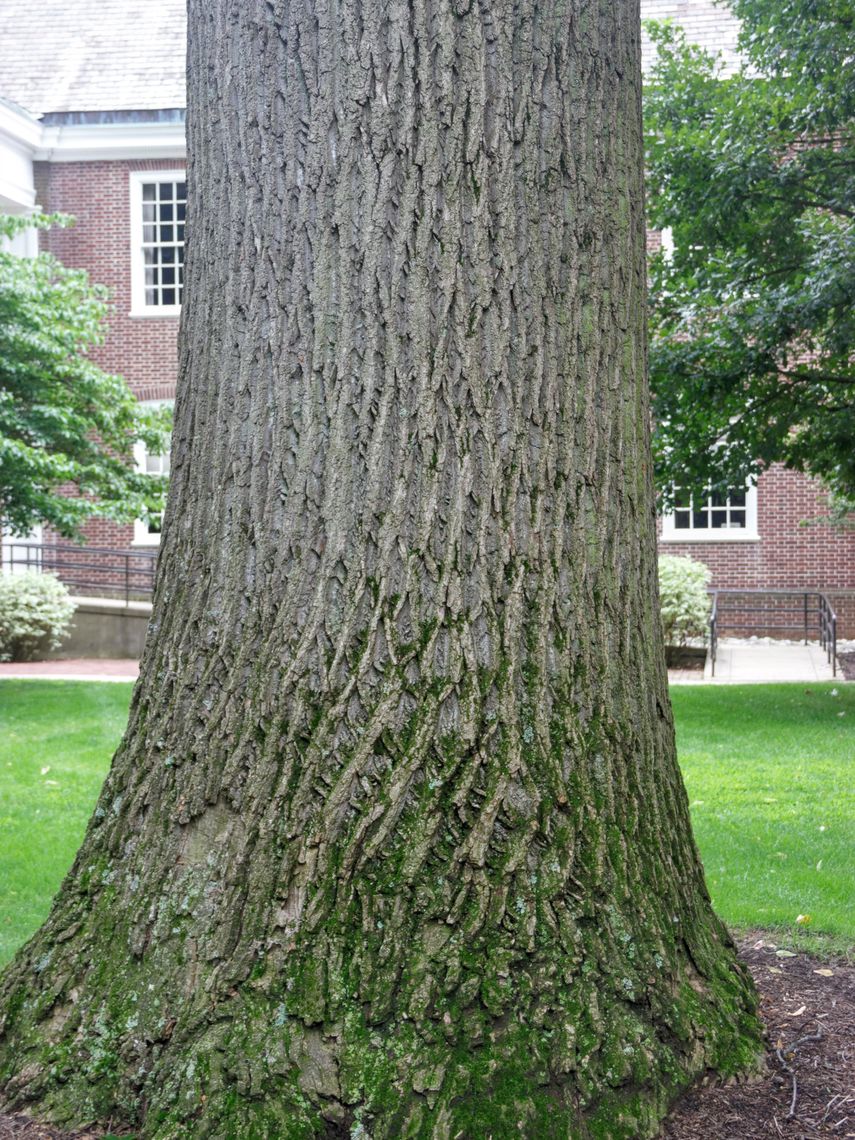Tulip Poplar (Liriodendron tulipifera)
The tulip tree is one of the largest native U.S. trees and is also very popular, being the state tree of Kentucky, Tennessee, and Indiana. It has interesting flowers which are cup-shaped and have yellow and orange petals. Though they are large and showy, these flowers may be hard to spot since they appear after leaves and occur on the uppermost branches of the tree. Instead, you may first notice the petals on the ground beneath the tree. Tulip tree leaves are smooth and glossy, 4-lobed, and bright green. This tree's wood was first used by Native Americans to make dugout canoes and continues to be used to make boats, furniture, and plywood. This tree attracts insect pollinators, birds, and small mammals.
Family: Magnoliaceae (Magnolia)
Characteristics: The 3-inch to 8-inch-long leaves are glossy, smooth, bright green, and have 4 lobes. In the fall, leaves turn a golden yellow. In May-June, 2-3 inch long, tulip-shaped, yellow flowers begin to bloom at the tops of the tree. Each flower petal has a orange band at its base. These flowers are followed by scaly, cone-like, brown fruits, that sit upright on branches. Bark is gray-brown and deeply furrowed. This tree has a pyramidal shape when young and becomes oval-rounded with age. It grows 70-90 feet high and 35-50 feet wide.
Foliage: Deciduous (leaves lost seasonally)
Geographic Origin: Eastern North America (native)
Cultivation Notes: Requires low maintenance. Does best in full sun, though can tolerate part-shade. Prefers acidic, moist, and well-drained soils.
Number on Campus: 13
Sources: Dirr, Morton Arboretum, Missouri Botanical Garden



